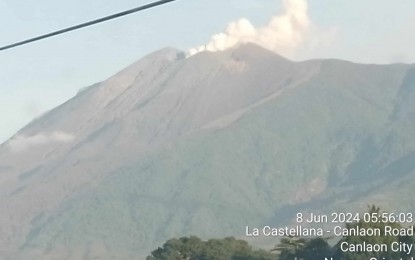
Mount Kanlaon (Contributed photo)
MANILA – The highest volcanic sulfur dioxide (SO2) emission from Kanlaon Volcano's summit crater was observed on Friday, averaging 5,397 tons, higher than the daily average of 1,897 tons this year.
The Philippine Institute of Volcanology and Seismology (Phivolcs), however, noted that Kanlaon Volcano's average SO2 emission has been 3,175 tons since June 3.
Several factors can lead to the fluctuation of SO2 emissions, according to Phivolcs Director Teresito Bacolcol.
"It could be due to (the) interaction of groundwater and volcanic gases, or shifts in magma movement. When groundwater heats up, it can carry dissolved SO2 to the surface, increasing emissions," he said in an interview.
Another cause, he said, could be magma getting closer to the surface, releasing more gas.
Bacolcol noted that the elevated gas flux indicates that the volcano continues to degas and that the parameters are still elevated.
"Therefore, we still have to maintain (the volcano's) Alert Level 2 (status)," he said.
Volcanic earthquake activity has persisted at an average of 10 per day since the eruption.
"The overall monitoring parameters indicate that magmatic processes beneath (the) volcano may be driving current unrest, causing persistently high concentrations of volcanic gas emission, swelling of the edifice, and occasional volcanic earthquake activity," Phivolcs said in an advisory Friday night.
Under Alert Level 2, the current unrest driven by shallow magmatic processes can lead to explosive eruptions or precede hazardous magmatic eruptions at the summit crater.
The public is strongly advised to refrain from entering the 4-km. permanent danger zone to minimize risks from such volcanic hazards as pyroclastic density currents, ballistic projectiles, and rockfall.
Aviation authorities are urged to advise pilots to avoid flying close to the volcano’s summit as ash and ballistic fragments from a sudden eruption can be hazardous to aircraft, Phivolcs said. (PNA)
